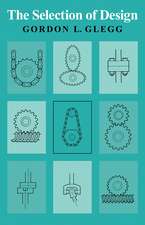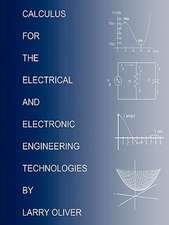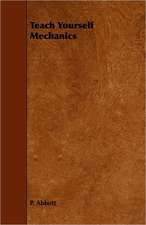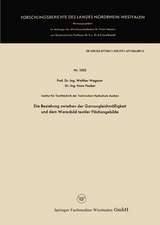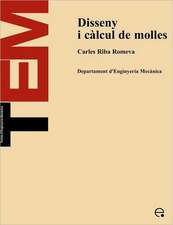Human Orthopaedic Biomechanics: Fundamentals, Devices and Applications
Editat de Bernardo Innocenti, Fabio Galbuseraen Limba Engleză Paperback – 24 feb 2022
Finally, any orthopedic surgeons looking to deepen their knowledge of biomechanical aspects will benefit from the accessible writing style in this title.
- Covers theoretical aspects (mechanics, stress analysis, constitutive laws for the various musculoskeletal tissues and mechanobiology)
- Presents components of different regulatory aspects, failure analysis, post-marketing and clinical trials
- Includes state-of-the-art methods used in orthopedic biomechanics and in designing orthopedic implants (experimental methods, finite element and rigid-body models, gait and fluoroscopic analysis, radiological measurements)
Preț: 576.93 lei
Preț vechi: 743.78 lei
-22% Nou
Puncte Express: 865
Preț estimativ în valută:
110.41€ • 114.61$ • 92.06£
110.41€ • 114.61$ • 92.06£
Carte tipărită la comandă
Livrare economică 17-31 martie
Livrare express 14-20 februarie pentru 93.33 lei
Preluare comenzi: 021 569.72.76
Specificații
ISBN-13: 9780128244814
ISBN-10: 012824481X
Pagini: 758
Ilustrații: Approx. 250 illustrations (250 in full color)
Dimensiuni: 191 x 235 x 43 mm
Greutate: 1.28 kg
Editura: ELSEVIER SCIENCE
ISBN-10: 012824481X
Pagini: 758
Ilustrații: Approx. 250 illustrations (250 in full color)
Dimensiuni: 191 x 235 x 43 mm
Greutate: 1.28 kg
Editura: ELSEVIER SCIENCE
Public țintă
The primary audience of this book is graduate engineering students engaged in courses about orthopaedic biomechanics. In addition, all bioengineers (research labs, manufacturers of orthopaedic devices) interested in orthopaedic biomechanics could be interested in using the book as a reference or handbook.Cuprins
1. Introduction: From Mechanics to Biomechanics
2. Mechanical Properties of Biological Tissues
3. Orthopaedic Biomechanics: Stress Analysis
4. Orthopaedic Biomechanics: Multibody Analysis
5. Fundamentals of Mechanobiology
6. Bone Biomechanics
7. Muscle Biomechanics
8. Ligaments and Tendons Biomechanics
9. Cartilage Biomechanics
10. Meniscus Biomechanics
11. Intervertebral Disc Biomechanics
12. Biomechanics of the Hip Joint
13. Biomechanics of the Knee Joint
14. Biomechanics of the Spine
15. Biomechanics of the Shoulder Joint
16. Biomechanics of the Ankle Joint
17. Biomechanics of Wrist and Elbow
18. Biomaterials and Biocompatibility
19. Hip Prosthesis: Biomechanics and Design
20. Knee Prosthesis: Biomechanics and Design
21. Spinal Implants: Biomechanics and Design
22. Shoulder Prosthesis: Biomechanics and Design
23. Devices for Traumatology: Biomechanics and Design
24. Regeneration and Repair of Ligaments and Tendons
25. Biomechanical Requirements for Certification and Quality in Medical Devices
26. Clinical Evaluation of Orthopaedic Implants
27. Computer-Assisted Orthopaedic Surgery
28. Experimental Orthopaedic Biomechanics
29. Challenges in the Anatomical Modeling of the Musculoskeletal System
30. Joint Kinematics Through Instrumented Motion Analysis
31. Fluoroscopy
32. Finite Element Analysis in Orthopaedic Biomechanics
33. Rigid-Body and Musculoskeletal Models
34. The Use of Computational Models in Orthopaedic Biomechanical Research
2. Mechanical Properties of Biological Tissues
3. Orthopaedic Biomechanics: Stress Analysis
4. Orthopaedic Biomechanics: Multibody Analysis
5. Fundamentals of Mechanobiology
6. Bone Biomechanics
7. Muscle Biomechanics
8. Ligaments and Tendons Biomechanics
9. Cartilage Biomechanics
10. Meniscus Biomechanics
11. Intervertebral Disc Biomechanics
12. Biomechanics of the Hip Joint
13. Biomechanics of the Knee Joint
14. Biomechanics of the Spine
15. Biomechanics of the Shoulder Joint
16. Biomechanics of the Ankle Joint
17. Biomechanics of Wrist and Elbow
18. Biomaterials and Biocompatibility
19. Hip Prosthesis: Biomechanics and Design
20. Knee Prosthesis: Biomechanics and Design
21. Spinal Implants: Biomechanics and Design
22. Shoulder Prosthesis: Biomechanics and Design
23. Devices for Traumatology: Biomechanics and Design
24. Regeneration and Repair of Ligaments and Tendons
25. Biomechanical Requirements for Certification and Quality in Medical Devices
26. Clinical Evaluation of Orthopaedic Implants
27. Computer-Assisted Orthopaedic Surgery
28. Experimental Orthopaedic Biomechanics
29. Challenges in the Anatomical Modeling of the Musculoskeletal System
30. Joint Kinematics Through Instrumented Motion Analysis
31. Fluoroscopy
32. Finite Element Analysis in Orthopaedic Biomechanics
33. Rigid-Body and Musculoskeletal Models
34. The Use of Computational Models in Orthopaedic Biomechanical Research


